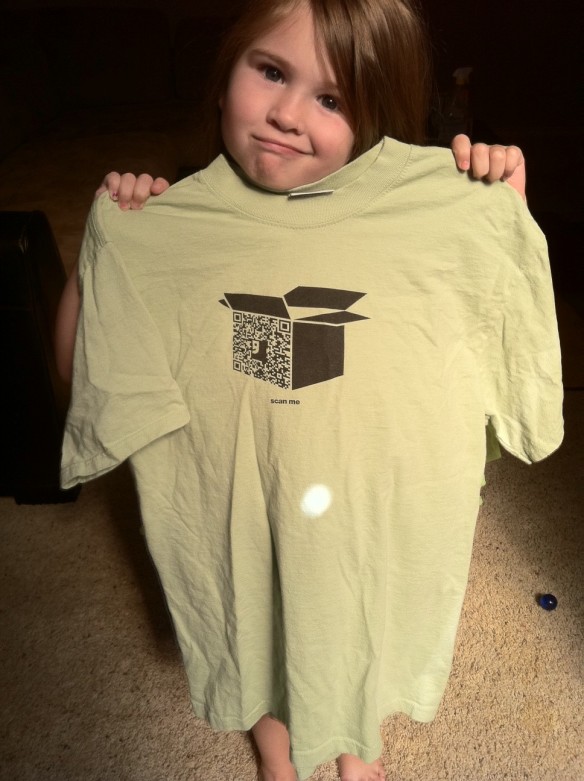The first time I ever noticed a QR code was at SXSW this year. This is the first QR code I ever thought scan-worthy.

Unfortunately, it must not have been that great, because I can’t remember now what happened on the other side of pulling out my phone, launching the app, and scanning the code. That’s the challenge when it comes to QR codes. The benefit (or at least the possibility of a benefit) must be worth at least the amount of time it takes to scan the QR code.
Or it has to make something easier. As long as it takes to scan a QR code, it can take longer to launch a smart phone web browser, type in a URL, and then navigate to an area within that website. This is why I suggested QR codes for the April street guerilla campaign for Goodwill Industries of San Antonio. BradfordLawton sent out almost a dozen drivers to drive around high traffic areas around the city with these boxes on top of their cars…

When helpful citizens tried to flag down the driver, they received a gift card to Goodwill and a t-shirt. But I wanted to find a way to take this campaign from the street to online community engagement. So, here’s what I suggested to the agency.
Spot us on the street. Snap a photo. Upload it to Goodwill’s Facebook page and you might win a new iPad. To help people get the photo from their phone to our Facebook page, I suggested we use QR codes on the t-shirts we handed out. Take a look.

Kid not included. She’s my greatest work so far. 😉
Not only did this strategy increase fans by a couple hundred within a week, but it also increased engagement. The QR code was not only helpful during the campaign, but now there are hundreds of San Antonians who will wear this shirt, and continue to promote not only the brand, but also their presence online.
The usefulness and longevity of QR codes doesn’t rely on the technology, rather on how we are using it. So, what’s the coolest QR code you’ve seen? I would love to hear what motivated you to scan.
